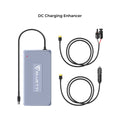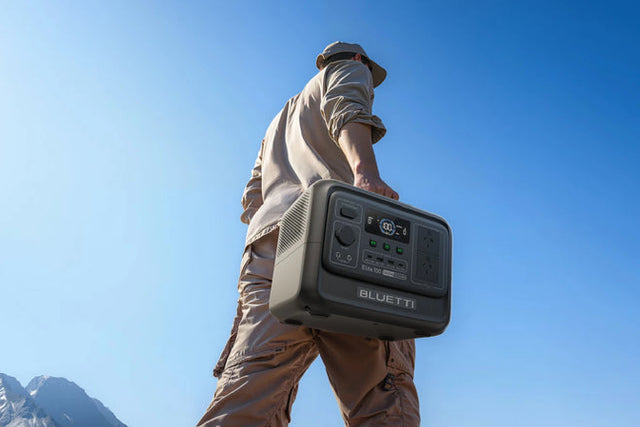As the world continues to grapple with the effects of climate change, there has been a growing push towards finding sustainable and renewable sources of energy. In Australia, one of the most abundant sources of renewable energy is the sun. With abundant sunlight and increasing environmental awareness, many homeowners are turning to solar power as a way to reduce their carbon footprint and save on electricity costs. If you're considering solar power for your home in Australia, this guide will provide you with all the information you need to make an informed decision and join the green energy revolution.
I. Understanding Solar Power
Solar power is a renewable energy source that uses the sun's rays to generate electricity for homes and businesses. The process begins with solar panels, which are made up of photovoltaic (PV) cells that convert sunlight into direct current (DC) electricity. This electricity then flows through an inverter, which converts it into alternating current (AC) electricity that can be used to power household appliances and electronics.
There are two main types of solar systems available for residential use: grid-tied and off-grid. Grid-tied systems are connected to the local power grid and allow homeowners to sell excess electricity back to the grid, while off-grid systems are not connected to the grid and rely on battery storage to store excess electricity for later use.
The key components of a solar system include solar panels, inverters, batteries (for off-grid systems), and a monitoring system. Solar panels are typically mounted on the roof of a home, where they can receive the most sunlight. The inverter is usually installed near the electrical panel and is responsible for converting DC electricity into usable AC electricity. Batteries are optional for grid-tied systems, but essential for off-grid systems as they store excess electricity for use when the sun is not shining. Lastly, a monitoring system allows homeowners to track their energy production and usage, ensuring that their solar system is functioning properly.

II. Assessing Your Home's Solar Potential
Solar power is a great way to reduce your carbon footprint and save money on energy bills in Australia. However, before you start installing solar panels on your roof, it's important to assess your home's solar potential. This will help you determine if solar power is a viable option for your home, and if so, how much energy you can expect to generate. In this section, we will discuss the key factors to consider when assessing your home's potential for solar power.
A. Factors to Consider
When it comes to solar power, certain factors can impact the efficiency and effectiveness of your system. These include your location, the size and angle of your roof, shading, and your energy needs. Let's take a closer look at each of these factors.
Location: Australia is one of the best places in the world for solar power. With plenty of sunshine and a high average solar radiation per square meter, most parts of the country are well-suited for solar energy. However, some regions may have more sun exposure than others, so it's important to research the solar potential in your specific location.
Roof Size and Angle: Solar panels are typically installed on rooftops, so it's important to have enough space and the right angle for optimal energy production. The size and pitch of your roof will determine the number of panels you can fit, which in turn, will impact the amount of energy you can generate.
Shading: Shading from trees, buildings, or other obstructions can significantly reduce the amount of sunlight that reaches your solar panels. Therefore, it's important to assess the shading on your roof, especially during peak sunlight hours, to ensure maximum efficiency of your solar system.
Energy Needs: The amount of energy your household consumes is a crucial factor in determining the size and type of solar system you will need. Calculating your energy needs will help you determine the number of solar panels required, and whether a battery storage system is necessary to meet your energy demands.
B. Calculating Your Energy Needs
In order to determine your energy needs, you will need to gather information on your household's electricity usage. This can be found on your energy bill, which typically includes your daily, monthly, and yearly consumption. By analyzing this data, you can estimate the amount of electricity you will need to generate from your solar system.
C. Assessing Your Home's Orientation and Shading
The orientation and shading of your home's roof are key factors in determining the effectiveness of your solar system. Your roof should ideally face either north or north-west to receive maximum sun exposure throughout the day. Additionally, it's important to assess any potential shading from trees, neighboring buildings, or seasonal obstructions, such as snow, to ensure your solar panels are not obstructed from direct sunlight.
By considering these factors and conducting a thorough assessment of your home's solar potential, you can determine if solar power is a feasible option for your household in Australia. This will also help you make informed decisions when it comes to selecting the right solar panels, system size, and placement for maximum energy efficiency and savings.

III. Choosing the Right Solar System
When it comes to solar powering your home in Australia, there are a few things you need to consider before making a decision on which solar system to install. This section will guide you on how to choose the right solar system for your home.
A. Grid-connected vs. stand-alone systems
The first thing to consider is whether you want a grid-connected or a stand-alone solar system. A grid-connected system is connected to the main electricity grid, allowing you to sell excess solar power back to the grid and receive credits on your electricity bill. This is the most common and cost-effective option for homeowners. On the other hand, a stand-alone system is not connected to the grid and relies solely on solar energy, making it more suitable for remote areas with no access to the grid.
B. Size and capacity of the system
The size and capacity of your solar system depends on your energy consumption and available roof space. A larger system will generate more electricity, but it will also cost more. To determine the right size for your home, consider your average energy usage and how much of it you want to offset with solar power. The average household in Australia uses around 18kWh of electricity per day, so a 5kW system would be sufficient to cover most of the energy needs.
C. Budget considerations
The cost of installing a solar system can be a significant factor for many homeowners. It's important to consider your budget and weigh it against the potential savings on your electricity bill. While a larger system may have a higher installation cost, it will also generate more electricity and provide greater savings in the long run. You should also factor in the cost of maintenance and any potential repairs in the future.
D. Brands and warranties
When choosing a solar system, it's essential to consider the brand and warranty of the panels and inverters. Look for reputable brands with a proven track record and good customer reviews. Also, make sure to check the warranty coverage and duration, as it can vary among manufacturers. A longer warranty period can provide more peace of mind and protection for your investment.
E. Government rebates and incentives
The Australian government offers various rebates and incentives to encourage the use of solar energy. One of the most significant initiatives is the Small-scale Renewable Energy Scheme (SRES), which provides financial incentives for installing solar panels. You can also benefit from feed-in tariffs, which pay you for any excess solar energy you feed back into the grid. Make sure to research and take advantage of these incentives to reduce the overall cost of your solar system.
By considering these factors, you can choose the right solar system that meets your energy needs, budget, and location. It's also essential to consult with a qualified solar installer who can assess your home's specific requirements and recommend the best system for you. With the right solar system, you can reduce your carbon footprint, save money on electricity bills, and contribute to a more sustainable future for Australia.
IV.Installation Process
Investing in solar power can not only save you money on your energy bills, but also reduce your carbon footprint. However, the installation process can be overwhelming if you aren't familiar with it. In this section, we will discuss the steps and considerations involved in installing solar power for your home in Australia.
A. Finding a reputable installer
The first step in the installation process is to find a reputable and experienced installer. It is important to do your research and choose a company that has a good track record and is known for using high-quality materials. You can ask for recommendations from friends or family who have solar power installed, or do an online search for installers in your area. Make sure to read reviews and look into the company's certifications and accreditations before making a decision.
B. Permits and regulations
Before installing solar panels, you will need to obtain the necessary permits and approvals from your local council. This can vary depending on where you live in Australia, so it is important to check with your local council or a solar installer to understand the specific regulations in your area. Additionally, you may need to register your solar system with your state's energy regulator. It is important to ensure that all necessary permits and approvals are obtained before starting the installation process to avoid any delays or complications.
C. Installation timeline
The timeline for solar panel installation can vary depending on factors such as the size of your system, weather conditions, and the availability of the installer. On average, the process can take anywhere from 1-3 days. The first day will involve the installation of the panels on the roof, while the second day will include the installation of the inverter, wiring, and connection to the electrical grid. The final day will involve the inspection and commissioning of the system.
D. Maintenance requirements
Solar panels require minimal maintenance, but it is important to regularly check and clean them to ensure they are working efficiently. Dust, dirt, leaves, and bird droppings can reduce the efficiency of the panels. Depending on your location and the weather conditions, it is recommended to clean the panels every 6-12 months. Additionally, it is important to check the inverter regularly for any issues. If you notice any damage or malfunction, it is important to contact your installer for assistance.
installing solar power for your home in Australia requires finding a reputable installer, obtaining necessary permits and approvals, understanding the installation timeline, and being aware of maintenance requirements. With the right steps and considerations, you can successfully power your home with clean and renewable energy.

V. Maximizing Your Solar Savings
One of the main reasons homeowners in Australia opt for solar power is to save money on their energy bills. In order to maximize your savings, there are a few key strategies to consider.
A. Using Energy-Efficient Appliances
An important step in reducing your energy consumption and maximizing your solar savings is to use energy-efficient appliances. Look for appliances with a high star rating, which indicates that they are more energy efficient. These appliances may have a higher initial cost, but they will save you money in the long run by reducing your energy usage.
B. Ways to Reduce Energy Consumption
Aside from using energy-efficient appliances, there are other ways to reduce your energy consumption and save money. Simple habits like turning off lights and electronics when not in use, using natural lighting during the day, and washing clothes in cold water can make a significant difference in your energy usage. You can also consider investing in smart home technology that allows you to control your energy usage remotely.
C. Net Metering and Feed-In Tariffs
In Australia, many energy providers offer net metering and feed-in tariffs as part of their solar plans. Net metering allows you to sell excess energy back to the grid, while feed-in tariffs provide a payment for the excess energy produced by your solar panels. These options can help offset the cost of your energy bill and potentially even earn you money.
D. Battery Storage Options
Another way to maximize your solar savings is by investing in battery storage. This allows you to store excess energy produced by your solar panels and use it when needed, rather than selling it back to the grid at a lower rate. This can be especially beneficial during peak usage times when energy prices are higher.
by using energy-efficient appliances, reducing energy consumption, taking advantage of net metering and feed-in tariffs, and investing in battery storage, you can maximize your solar savings and see a significant decrease in your energy bills. It is important to do your research and consult with a professional to determine the best solar power system and strategies for your home in Australia. With the right approach, solar power can provide a cost-effective and sustainable energy solution for your household.
1. What are the benefits of solar power for my home in Australia?
Solar power offers numerous benefits for homes in Australia, making it an increasingly popular option for homeowners. One of the main benefits is the potential cost savings. By harnessing the energy of the sun, homeowners can significantly decrease their electricity bills, as they will be generating their own energy rather than relying on traditional electricity providers. Additionally, solar power is a renewable energy source, meaning it is better for the environment compared to fossil fuels. This can also have a positive impact on Australia's goal to reduce its carbon footprint. Furthermore, installing solar panels can increase the value of a home, making it a wise long-term investment. In addition to financial benefits, solar power is also a reliable source of energy, especially in sunny regions of Australia, ensuring a continuous supply of electricity for homeowners. the benefits of solar power for homes in Australia are numerous and can greatly improve both financial and environmental aspects of homeownership.
2. How does solar power work and how can it be integrated into my existing home?
Solar power is a renewable energy source that harnesses energy from the sun and converts it into electricity. It works through the use of photovoltaic (PV) panels, which are made up of silicon cells that absorb the sun's energy and generate an electric current. This current is then sent to an inverter, which converts it from direct current (DC) to alternating current (AC), making it usable in the home. The AC electricity is then fed into the existing electrical system of the home, where it can power appliances and devices.
Integrating solar power into an existing home requires careful planning and installation. The first step is to determine the energy needs of the home and the available space for solar panels. It is important to consult with a professional to assess the structural integrity of the roof and determine the best placement for the panels. Once the panels are installed, they need to be connected to an inverter, which is typically mounted on the side of the home. The inverter is then connected to the home's main electrical panel, allowing the solar energy to flow seamlessly into the existing system.
Another important aspect of integrating solar power into a home is ensuring that the home is energy efficient. This means reducing energy consumption through practices such as using energy-efficient appliances and LED light bulbs, as well as insulating the home to reduce heat loss. By reducing overall energy consumption, homeowners can maximize the benefits of solar power and potentially generate excess energy to sell back to the grid.
Solar power can also be integrated into a home in the form of a solar battery storage system. This allows homeowners to store excess energy generated by their solar panels for use during peak energy demand or at night when the panels are not producing electricity. This can help further reduce reliance on the grid and potentially save money on electricity bills.
solar power works by harnessing energy from the sun and converting it into electricity through photovoltaic panels and an inverter. To integrate it into an existing home, careful planning and installation are necessary, along with maximizing energy efficiency. With the right approach, homeowners can take advantage of the benefits of solar power and reduce their reliance on traditional energy sources.
3. What are the upfront costs and potential savings with solar power?
The upfront costs of installing a solar power system in your home in Australia can vary greatly depending on the size of the system and the complexity of the installation. On average, a 5kW system can cost anywhere from $5,000 to $10,000. However, there are government incentives, such as the Small-Scale Renewable Energy Scheme, that can significantly reduce the upfront costs. Additionally, there may be additional costs for items such as batteries and inverters.
Despite the initial investment, the potential savings with solar power in Australia are significant. The Australian Energy Market Commission estimates that a household with a 5kW solar system can save up to $1,000 per year on their electricity bill. Over the lifespan of the system, which is typically 25 years, this could add up to savings of up to $25,000. Furthermore, solar power systems require minimal maintenance, which means there are no ongoing costs, making it a cost-effective option in the long run.
It is important to note that the potential savings with solar power are highly dependent on factors such as the size and efficiency of the system, the household's energy usage, and the location of the home. For instance, homes in regions with high electricity rates or strong sunlight will see greater savings than those in areas with lower electricity rates or less sunlight.
In addition to cost savings, solar power also adds value to a home. A study by the Lawrence Berkeley National Laboratory found that homes with solar panels installed sell for an average of 3.74% more than homes without. This means that homeowners can potentially recoup their investment when selling their home.
while the upfront costs of solar powering a home in Australia may seem steep, the potential savings and added value to the property make it a worthwhile investment in the long term. With government incentives and the increasing affordability of solar technology, it is becoming a more accessible and attractive option for homeowners looking to reduce their energy costs and contribute to a more sustainable future.
4. Are there any government incentives or rebates available for solar power in Australia?
Yes, there are a number of government incentives and rebates available for solar power in Australia. The most significant of these is the Small-scale Renewable Energy Scheme (SRES), which provides financial incentives for small-scale renewable energy systems such as solar panels. This scheme is administered by the Australian Government's Clean Energy Regulator, and it operates through the creation of Small-scale Technology Certificates (STCs). These certificates can be traded on the open market and can significantly reduce the upfront cost of installing a solar power system.
In addition to the SRES, many state and territory governments also offer their own rebates and incentives for solar power. For example, the New South Wales government offers the Solar Homes and Communities Plan, which provides rebates for households and community organizations that install solar power systems. Similarly, the Queensland government has the Solar Bonus Scheme, which offers feed-in tariffs for solar energy exported to the grid.
These government incentives and rebates make solar power more financially feasible for homeowners in Australia, and they play a crucial role in promoting the adoption of renewable energy. It is important for individuals looking to install solar power in their homes to research and take advantage of these available incentives in order to make the switch to clean, sustainable energy.
5. How can I choose the right solar panel system for my home and what should I look for in a reputable installation company?
In order to choose the right solar panel system for your home in Australia, there are several factors that you should consider. The first step is to determine your energy needs and how much electricity you would like to generate from the solar panels. This will help you decide on the size and capacity of the system that you require. Additionally, it is important to research and compare different solar panel brands and their warranties, as well as their efficiency ratings.
When it comes to selecting a reputable installation company, there are a few key things you should look for. First and foremost, make sure that the company is accredited by the Clean Energy Council, as this ensures that they meet the required standards for installation. You should also check their reviews and ratings, as well as their experience and expertise in the field. A good company will also offer warranties and after-sales support, and will be transparent about their pricing and installation process. Remember to always ask for quotes from multiple companies to compare and make an informed decision.
solar power is a reliable and cost-effective solution for powering your home in Australia. By harnessing the energy of the sun, you can reduce your dependence on traditional forms of energy and save money in the long run. With the government's support and incentives, there has never been a better time to invest in solar panels for your home. With a little research and planning, you can easily find the right solar system for your home and start reaping the benefits of clean, renewable energy. So why wait? Make the switch to solar power today and do your part in creating a more sustainable future for Australia and the world.












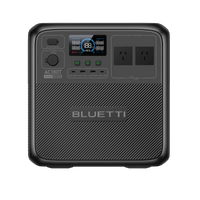












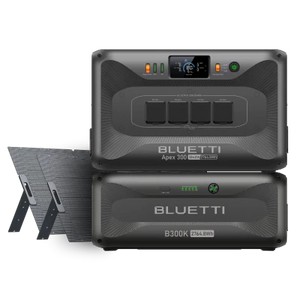





















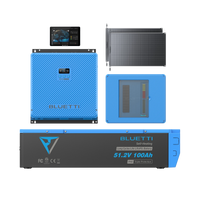





















![[Phased Out] BLUETTI B80P Expansion Battery | 806Wh](http://www.bluettipower.com.au/cdn/shop/files/202310025B80P_2000-2000px_4_4caa0c1c-4dab-4272-9e9b-2b7507e5bd81.jpg?v=1713777870&width=200)
![[Phased Out] BLUETTI B210P Expansion Battery | 2,150Wh](http://www.bluettipower.com.au/cdn/shop/files/2_08cf9ef3-03a4-4489-b641-d3edb8094896.webp?v=1716016566&width=200)
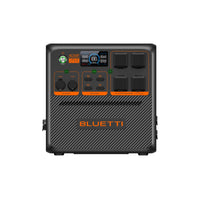


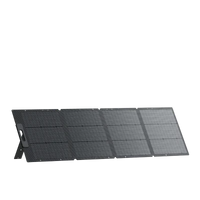


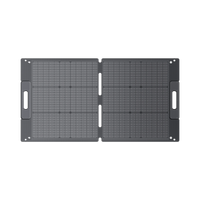





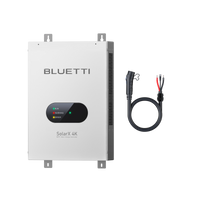






















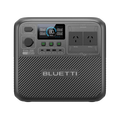

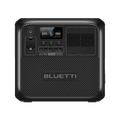






























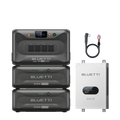



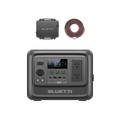





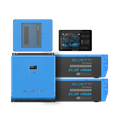














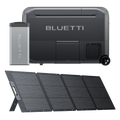




















![[Phased Out] BLUETTI B80P Expansion Battery | 806Wh](http://www.bluettipower.com.au/cdn/shop/files/202310025B80P_2000-2000px_4_4caa0c1c-4dab-4272-9e9b-2b7507e5bd81.jpg?v=1713777870&width=120)
![[Phased Out] BLUETTI B210P Expansion Battery | 2,150Wh](http://www.bluettipower.com.au/cdn/shop/files/2_08cf9ef3-03a4-4489-b641-d3edb8094896.webp?v=1716016566&width=120)


















